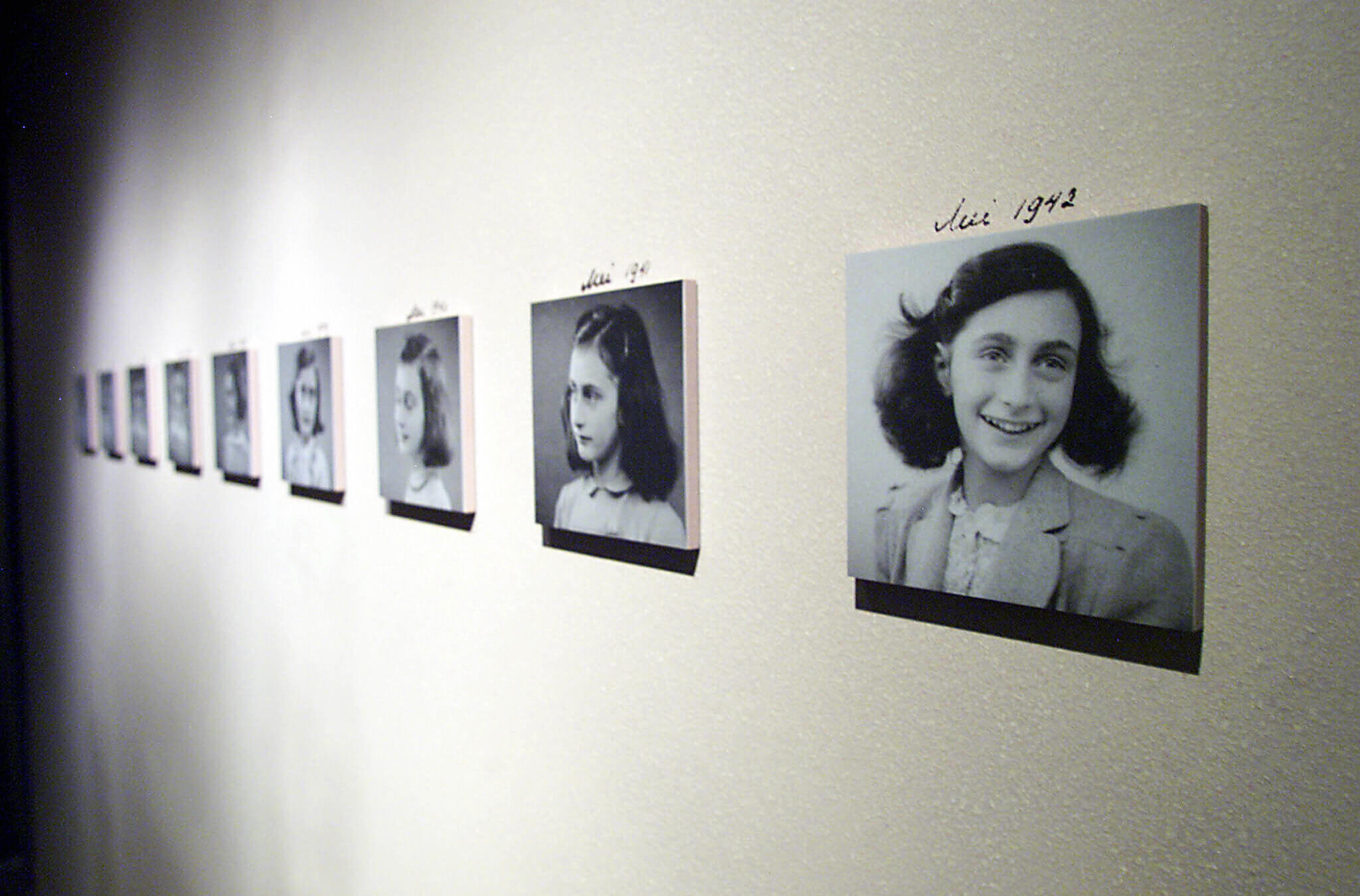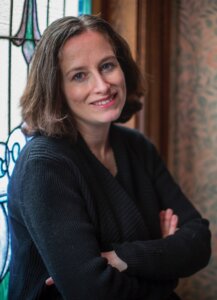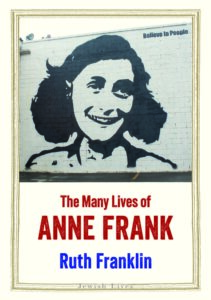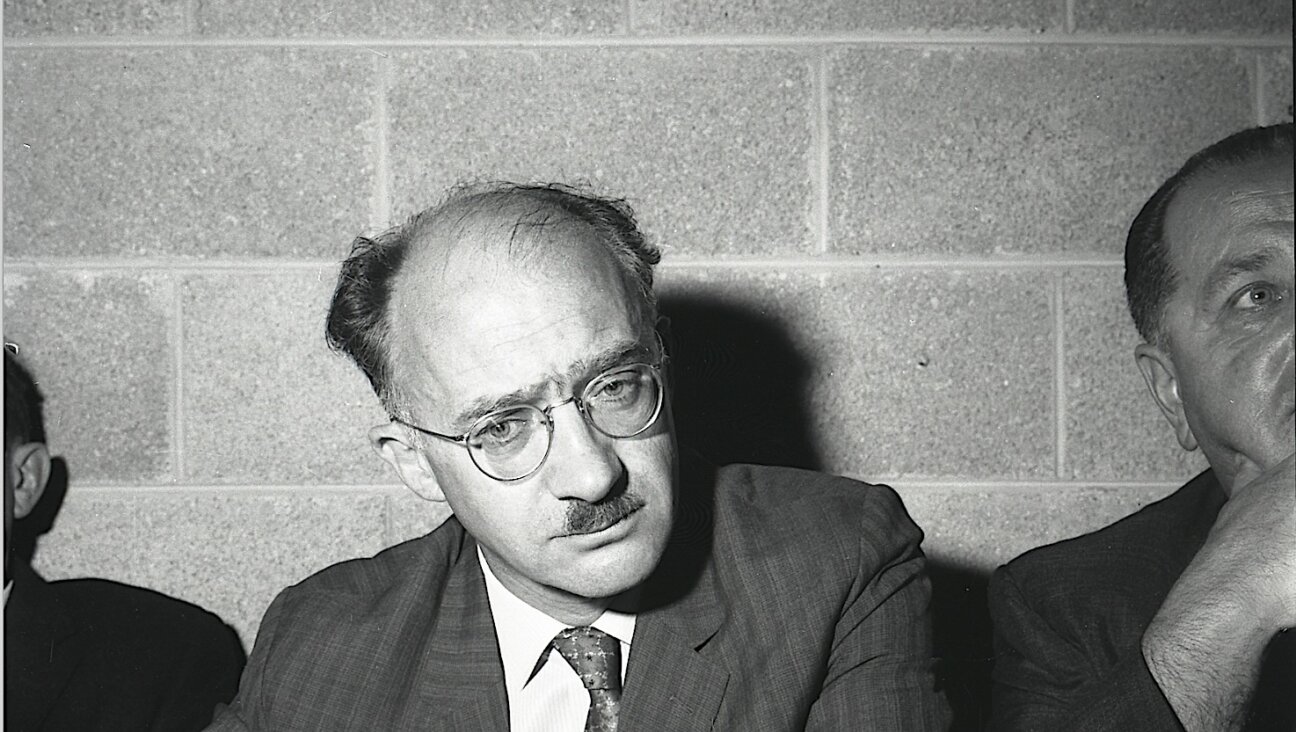What we write about when we write about Anne Frank
In the latest entry in the ‘Jewish Lives’ series, Ruth Franklin explores the ‘Many Lives’ of the most famous witness to the Holocaust

An image from an Anne Frank exhibit at The United States Holocaust Memorial Museum in Washington, DC. Photo by Getty Images
The Many Lives of Anne Frank
By Ruth Franklin
Yale University Press, 440 pages, $30
The title of Ruth Franklin’s The Many Lives of Anne Frank exudes a tragic and no doubt purposeful irony. A melding of biography, literary exegesis and cultural history, this volume in the Yale University Press’s excellent Jewish Lives series ably chronicles the outsized impact of a girl who, as virtually the entire world knows, didn’t survive into adulthood.
The facts of Anne Frank’s life are mostly familiar. The Frank family — including Anne’s businessman father, Otto; her mother, Edith; and her older sister, Margot — left Frankfurt, Germany, for Amsterdam in 1933-34, fleeing Nazi persecution. After the 1940 Nazi occupation of the Netherlands, as anti-Jewish restrictions mounted and the threat of deportation grew, the family again found refuge — this time in a “secret annex” attached to the business Otto Frank once ran.
In those cramped rooms, which Anne appreciatively called “superpractical” and “exquisite,” several of Frank’s former employees helped sustain his family and four other Jews for more than two years, from 1942 to 1944.
Despite various investigations and abundant theories, no one knows for sure who betrayed the Franks’ hiding place — only that the betrayal was catastrophic. Anne died of typhus in Bergen-Belsen at just 15, along with her sister. Of the annex residents, only Otto Frank survived the war.

Anne’s posthumously published diary remains the most famous document of the Holocaust — a staple of classrooms and an inspiration for drama, fiction, poetry, film, art and music, as well as a recent Forward podcast. The Anne Frank House, a perennially sold-out Amsterdam tourist attraction, is currently mounting an exhibition at New York’s Center for Jewish History (through April 30) that features a furnished replica of the annex and more than 100 artifacts.
“Anne Frank herself has become not just a person who once lived, breathed, and wrote but a symbol: a secret door that opens into a kaleidoscope of meanings, most of which her legions of fans understand incompletely, if at all,” Franklin writes. Her dual aim is to unpack those meanings and to restore Anne Frank to herself.
The author previously of A Thousand Darknesses: Lies and Truth in Holocaust Fiction and Shirley Jackson: A Rather Haunted Life, Franklin integrates a variety of perspectives. She draws on biographies by Melissa Müller, Mirjam Pressler and others, as well as Anne’s short stories, memoirs by the family’s Dutch helpers and Anne’s girlhood friends, family letters, and a wide swath of cultural representations.
She also situates the Franks’ travails within the larger context of the sufferings of Dutch Jews, three-quarters of whom perished in the Holocaust, and of the Nazi concentration camp regime. What, she wonders, might Anne have written of Auschwitz had she survived?
Franklin liberally incorporates Anne’s own words into her text, printing diary entries in italics. At times, perhaps to immerse readers more fully, she reverts to the present tense. She also slows or interrupts the narrative to take deep dives into topics that particularly engross her.
The first involves the form and intent of the diary. Franklin reminds readers that the volume published by Otto Frank (the first U.S. edition dates from 1952) was something of a compendium.
From ages 13 to 15, Anne did indeed keep a diary, one volume of which seems to have been lost. Then, inspired by a Dutch radio appeal for first-person accounts of the period, she carefully rewrote those pages with an eye toward publication, a process interrupted by the Nazi raid on the annex. Franklin carefully compares the two versions and makes the point that Anne was “a deliberate, literary witness to Nazi persecution” who transformed her diary into a memoir of sorts.

Finally, Otto Frank created the book we now know by editing Anne’s second version and adding passages from the earlier one. Franklin defends Otto from the charge of censorship, noting that he retained much (though not all) of Anne’s criticism of her mother. He also restored details of Anne’s romance with the teenaged Peter van Pels, another annex resident. Otto Frank’s chief fault was in not acknowledging “the complicated genesis of the printed text,” Franklin argues. “The special aura around the diary conflicts with the messiness of its reality.”
Franklin also lays out Otto Frank’s efforts, beginning in 1938, to immigrate with his family to the United States. She offers a heartbreaking chronicle of his attempts to hurdle the obstacles of tiny U.S. quotas, bureaucratic lethargy, and burdensome visa and financial requirements. Other German Jews with Otto Frank’s wealth and U.S. connections did manage to immigrate, but Frank may have waited too long. The process, though never easy, was less riddled with complexities earlier in the 1930s, when Frank instead chose to move the family to Amsterdam.
Franklin explores, in considerable depth, the conflicts that shadowed Frances Goodrich and Albert Hackett’s 1955 play, The Diary of Anne Frank. Meyer Levin, an advocate for the diary who reviewed it for The New York Times, later adapted it and sought, in vain, to have his script produced. He remained bitter. The Goodrich/Hackett play won both a Tony Award and a Pulitzer Prize, and was adapted into a successful 1959 film. But, over the years, it has been criticized for subsuming Anne’s Jewishness into a more universalistic reading of her plight.
The Many Lives of Anne Frank touches, too, on later renderings of Anne Frank, including in the fiction of Philip Roth (The Ghost Writer), Shalom Auslander (Hope: A Tragedy) and Nathan Englander (“What We Talk About When We Talk About Anne Frank”). Anne’s “chameleon-like quality” has made her story “uniquely enduring,” Franklin writes.
But Franklin urges us to remember the girl before the icon. Anne, she writes, was “smart, funny, and vivacious, but also moody and critical,” “a brilliant young woman who seized control of her own narrative.” And even before the diary, her great gift was to wed insight with candor. As a friend’s mother recalled from Anne Frank’s school days: “She saw everything exactly as it was.”

















